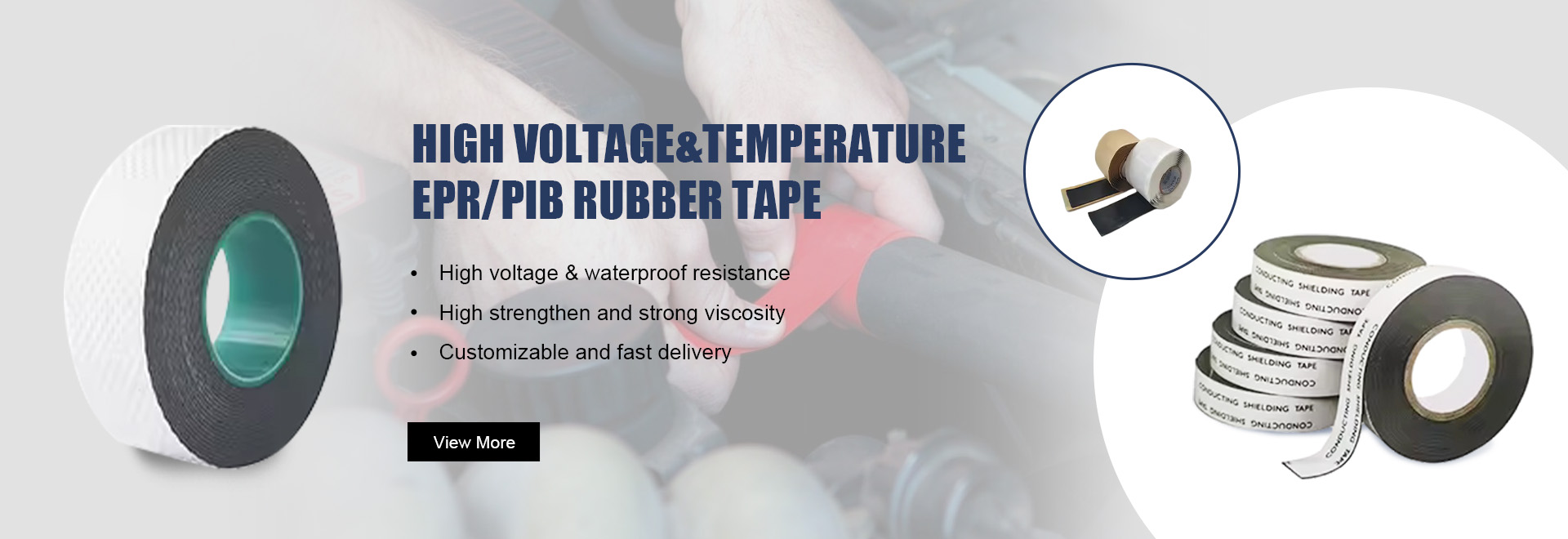The Versatile Uses of Rubber Splicing Tape
Rubber splicing tape is a highly versatile tool that finds applications across various industries due to its unique properties and effectiveness. This specialized type of tape is made from a rubber-based material, which not only provides a strong adhesive bond but also exhibits exceptional flexibility and resistance to different environmental factors. As a result, rubber splicing tape is commonly used in electrical, automotive, and industrial sectors for a variety of purposes.
The Versatile Uses of Rubber Splicing Tape
In the automotive industry, rubber splicing tape serves as an essential tool for both repair and maintenance. Technicians often use it to wrap and secure wiring harnesses, shielding them from wear and tear caused by friction or exposure to the elements. It provides a strong hold that can withstand vibrations and movement, making it particularly useful in applications where reliability is critical. Moreover, rubber splicing tape is resistant to oil and automotive fluids, further enhancing its suitability for use in vehicles.
rubber splicing tape uses

Industrial applications of rubber splicing tape are equally diverse. It is commonly used in manufacturing processes to bundle cables, secure hoses, and provide a protective layer against abrasion. Its ability to conform to surfaces helps maintain the integrity of equipment and machinery, ensuring that essential components remain protected during operation. The tape’s durability and moisture resistance make it an invaluable asset in various environments, from factories to construction sites.
Beyond these practical applications, rubber splicing tape is also favored for its ease of use. It can be applied without the need for additional tools, and its self-fusing capabilities allow it to bond to itself, creating a strong, waterproof seal. This user-friendly nature makes it an ideal choice for both professionals and DIY enthusiasts alike.
In conclusion, rubber splicing tape is a crucial component in many industries, offering reliable insulation, protection, and ease of application. Its versatility and effectiveness ensure that it remains a popular choice for a wide range of applications, reinforcing its status as an indispensable tool for anyone working with electrical systems, automotive components, or industrial machinery.
-
XIANGFAN Rubber Tape-Ultimate Solutions for All Your Insulation NeedsNewsJun.24,2025
-
XIANGFAN Rubber Tape-Protection for Industrial and Residential ApplicationsNewsJun.24,2025
-
XIANGFAN Rubber Tape: Superior Safety and Sealing for Demanding EnvironmentsNewsJun.24,2025
-
XIANGFAN Rubber Tape: Reliable Solutions for Every Electrical ChallengeNewsJun.24,2025
-
XIANGFAN Electrical & Industrial Tape: Powering Reliability Across IndustriesNewsJun.24,2025
-
XIANGFAN Electrical & Industrial Tape: Excellence in Every ApplicationNewsJun.24,2025
